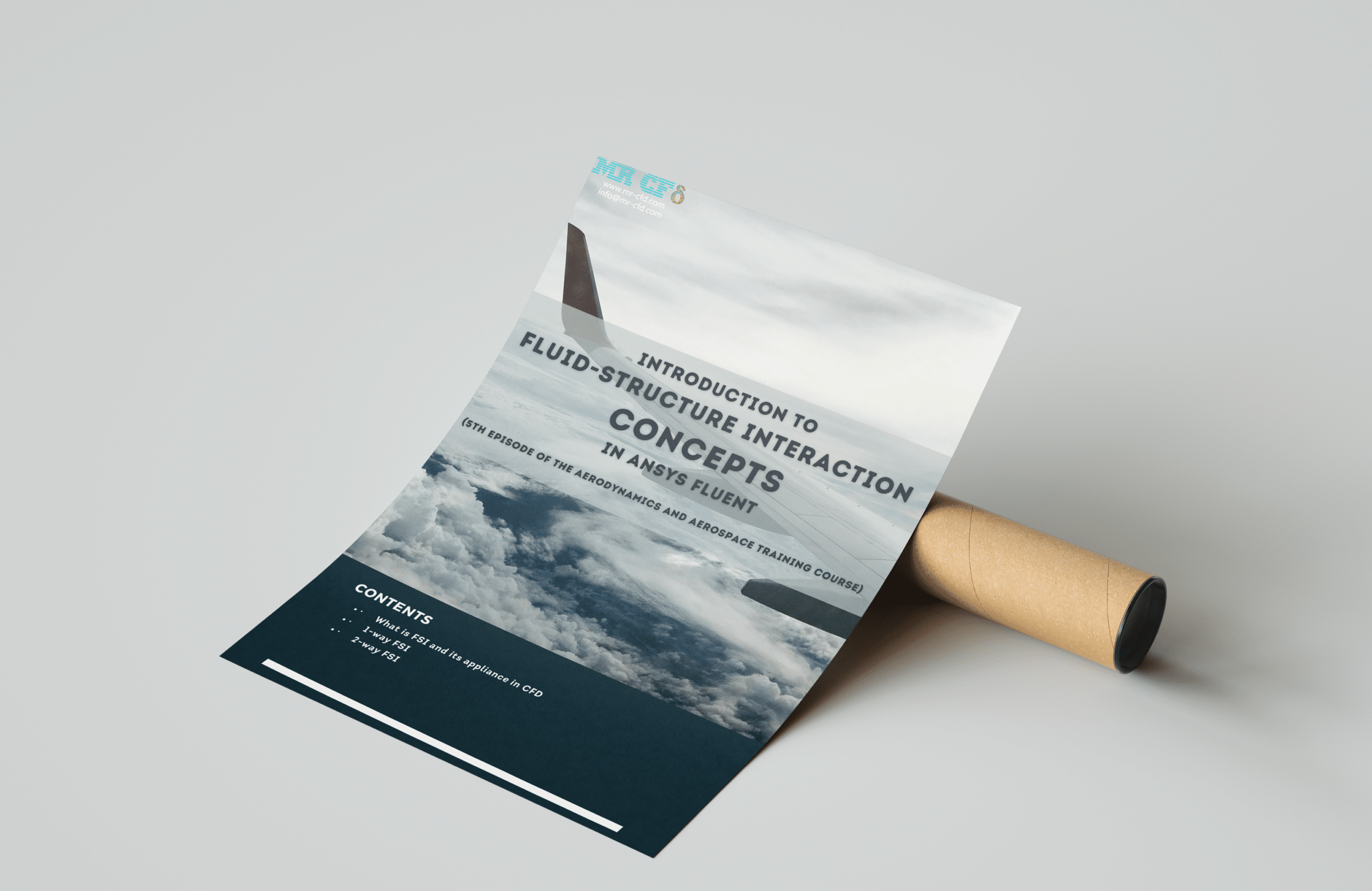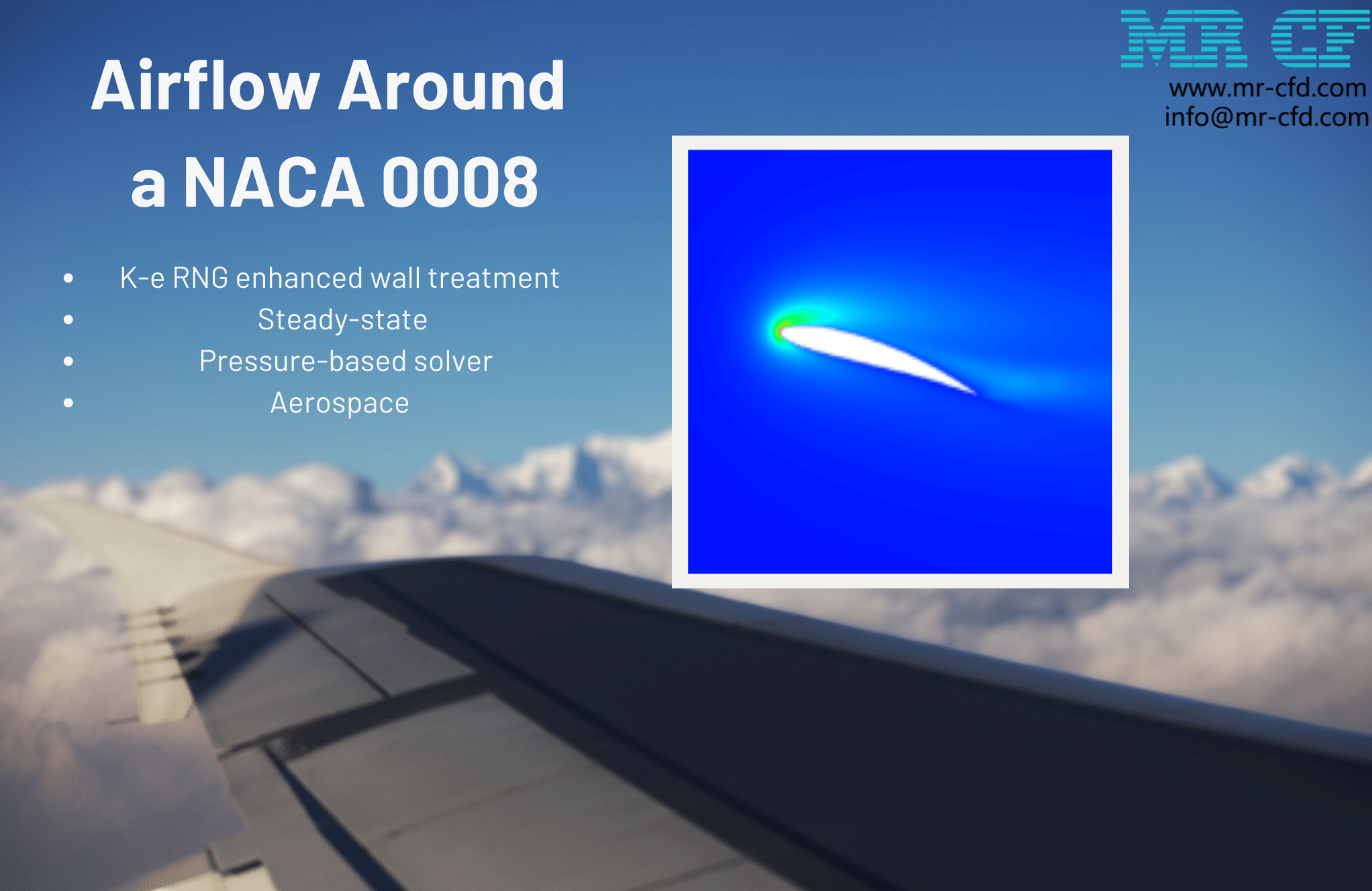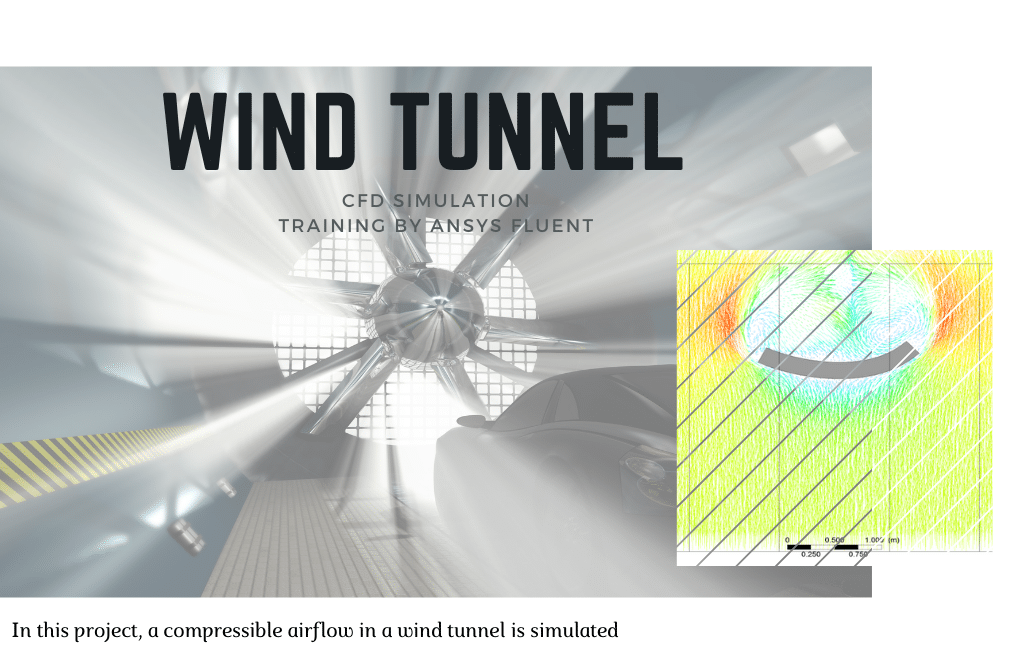Fluid-Structure Interaction Concepts in ANSYS Fluent
Free
- What are FSI and its appliance?
- 1-way FSI
- 2-way FSI
To Order Your Project or benefit from a CFD consultation, contact our experts via email (info@mr-cfd.com), online support tab, or WhatsApp at +44 7443 197273.
There are some Free Products to check our service quality.
If you want the training video in another language instead of English, ask it via info@mr-cfd.com after you buy the product.
Description
Coupling fluid flow simulation with structural analysis, Fluid-Structure Interaction (FSI) is a computer approach. Fluid-solid interaction simulation looks at what happens when fluids and solids interact in computer models.
Aerospace, automotive, civil, and mechanical engineering are just some of the numerous applications of FSI. When it comes to simulating FSI issues, ANSYS Fluent is a popular choice of software.
What is FSI and its appliance?
The term “fluid-structure interaction” refers to a method of simulating the interaction between fluids and solids. Various branches of engineering make use of it to model the response of structures to fluid pressure and velocity.
The influence of fluid flow on a system’s structural integrity may be investigated via FSI simulations. They are also used to better plan the construction of fluid-exposed buildings.
1-way FSI
1-way The fluid flow is simulated first in FSI, and then the structural analysis is carried out based on the findings of the fluid flow simulation. Because structural deformation is believed to be negligible, this sort of simulation focuses on fluid flow.
1-way Applications where the fluid flow affects the structure significantly but the deformation of the structure is negligible often make use of FSI.
2-way FSI
2-way When analyzing a fluid’s interaction with a structure, FSI analysts look at both the fluid flow and the structure at the same time. Both the fluid dynamics and the structural deformation are taken into account in this sort of simulation. In situations where fluid flow significantly affects the structure and the deformation of the structure is noteworthy, 2-way FSI is often employed.
It is usual practice to apply ANSYS Fluent, a sophisticated software package, for modeling FSI difficulties. With its numerous essential features and capabilities, it enables engineers to build realistic models of fluid and structural interactions. ANSYS Fluent enables users to simulate intricate fluid-structure interactions using several modeling methodologies and tools, and it supports both 1-way and 2-way FSI simulations.
Conclusion
Finally, Fluid-Structure Interaction is an essential method for modeling the interplay between fluids and structures in simulation. It is utilized extensively in several engineering disciplines to improve the development of structures exposed to fluid flow.
A wide variety of tools and functions are available in the ANSYS Fluent software suite, making it ideal for simulating FSI issues with precision. When modeling complicated fluid-structure interactions, ANSYS Fluent is the software of choice, regardless of whether you’re working on a 1-way or 2-way FSI simulation.




Prof. Fred Kris IV –
What a fantastic learning resource! As someone who comes from a theoretical background, this course on Fluid-Structure Interaction Concepts in ANSYS Fluent filled the implementation gap for me beautifully. Now understanding both 1-way and 2-way FSI feels like second nature, and I find myself much more confident in tackling real-world scenarios across engineering disciplines.
MR CFD Support –
Thank you for your kind words! We are delighted to hear that our course has built a solid foundation for your understanding of FSI concepts and boosted your confidence in facing engineering challenges. Your feedback is greatly appreciated, and it’s rewarding to know our product was helpful in advancing your skills.
Dedric Jones –
I’ve been struggling to grasp the difference between 1-way and 2-way FSI simulations. Can you provide a real-world example that illustrates the practical applications of each type in a way that a beginner could understand?
MR CFD Support –
Sure! In a 1-way FSI simulation, imagine wind blowing on a solid fence. You study how the wind’s pressure and direction change as they move past the fence, but you assume the fence itself doesn’t bend or shake—its position remains static. An example of this could be analyzing the impact of wind on a skyscraper’s surface where the structure’s response is so minimal it can be ignored.
On the other hand, a 2-way FSI simulation is like a flag fluttering in the wind. The wind influences the flag’s position—how it ripples and waves—and, concurrently, the flag’s changing shape affects the flow of the wind itself. This is often used where the structure’s reaction to the fluid flow is significant, such as in the design of sails for boats where both the airflow and fabric movement must be taken into consideration.
Luella Ziemann III –
I am thoroughly impressed with the systematic way Fluid-Structure Interaction is explained and utilized in ANSYS Fluent. The detailed description enhances the understanding of FSI’s application in various engineering sectors and provides clarity on the capabilities of ANSYS Fluent for simulating realistic FSI conditions.
MR CFD Support –
Thank you for your positive feedback! We’re delighted to hear that our explanation of Fluid-Structure Interaction in ANSYS Fluent was helpful and informative. Our goal is always to provide clear and detailed guidance to support our customers in their engineering challenges. If you have any further questions or need more information, please don’t hesitate to reach out.
Ferne Stanton –
I’m truly impressed by the thorough breakdown of both 1-way and 2-way FSI systems in ANSYS Fluent. The explanations provide a deep understanding of when to employ each system based on the interaction level between fluids and structures. Kudos to the team for crafting such a comprehensive and informative guide!
MR CFD Support –
Thank you for your positive feedback! We’re delighted to hear that our explanation of 1-way and 2-way FSI systems in ANSYS Fluent was informative and helpful for you. Our team strives to provide comprehensive guides to assist our customers in understanding complex concepts. We appreciate your recognition of the effort that goes into creating these resources.
Allen Spencer DVM –
Great explanation of the FSI concept using ANSYS Fluent! It really made understanding the importance of FSI in various engineering fields so much clearer, especially the differences between 1-way and 2-way FSIs and their applications.
MR CFD Support –
Thank you for your positive feedback! We are delighted to hear that our explanation of the Fluid-Structure Interaction (FSI) concepts using ANSYS Fluent was helpful and clear for you. It’s great to know that the information provided has enhanced your understanding of FSI’s critical role in engineering. If you ever need more details or have any other questions regarding our learning materials, please feel free to reach out.
Dr. Eulah Runolfsson V –
The tutorial really helped me understand FSI. I need to simulate a structure with significant deformation due to fluid dynamics. Should I use 1-way or 2-way FSI in ANSYS Fluent for that purpose?
MR CFD Support –
For simulating a structure that experiences significant deformation as a result of fluid dynamics, it’s best to use 2-way FSI in ANSYS Fluent. This approach will allow you to capture the coupled nature of the interaction where the structure’s deformation significantly alters the fluid flow, and vice versa.